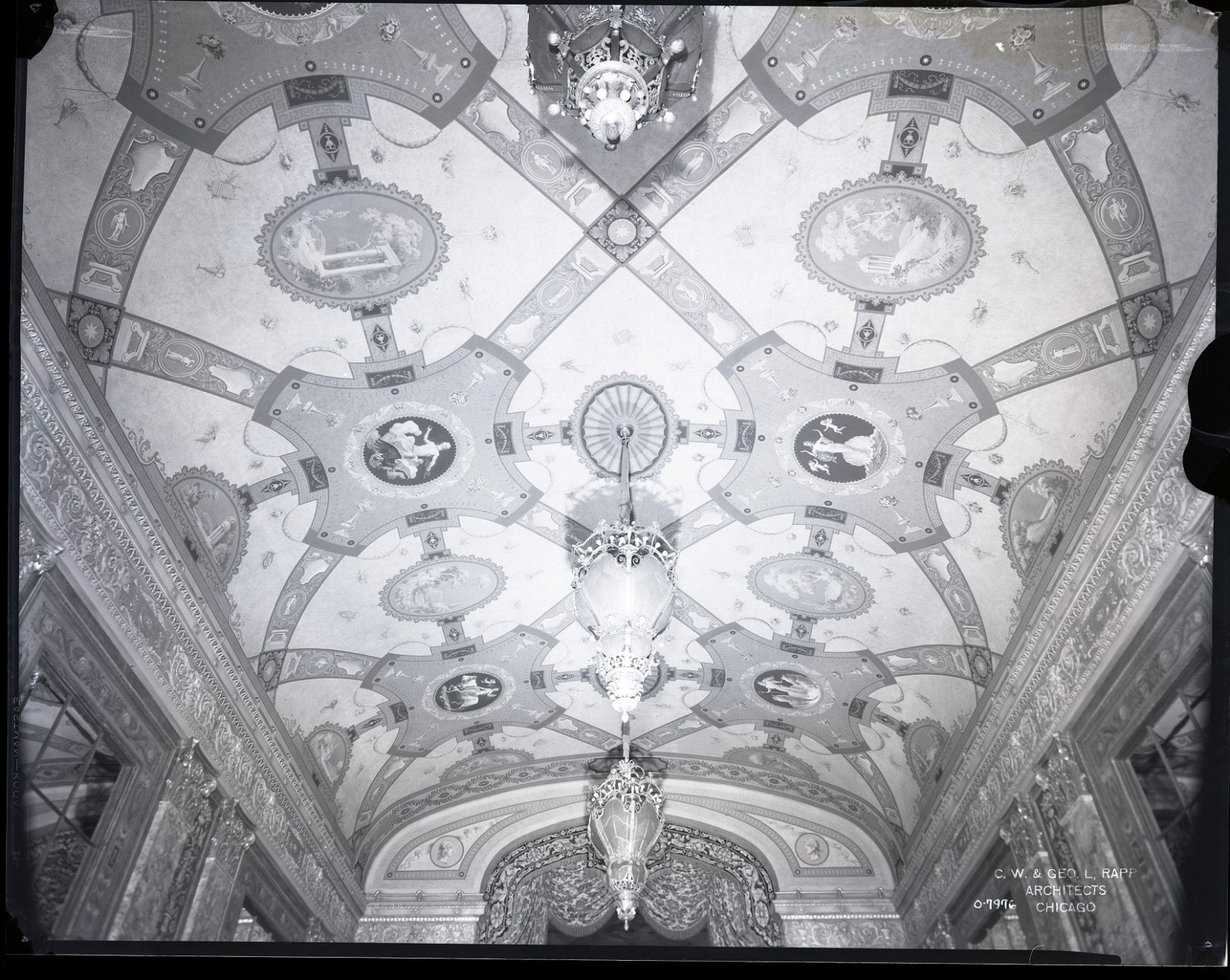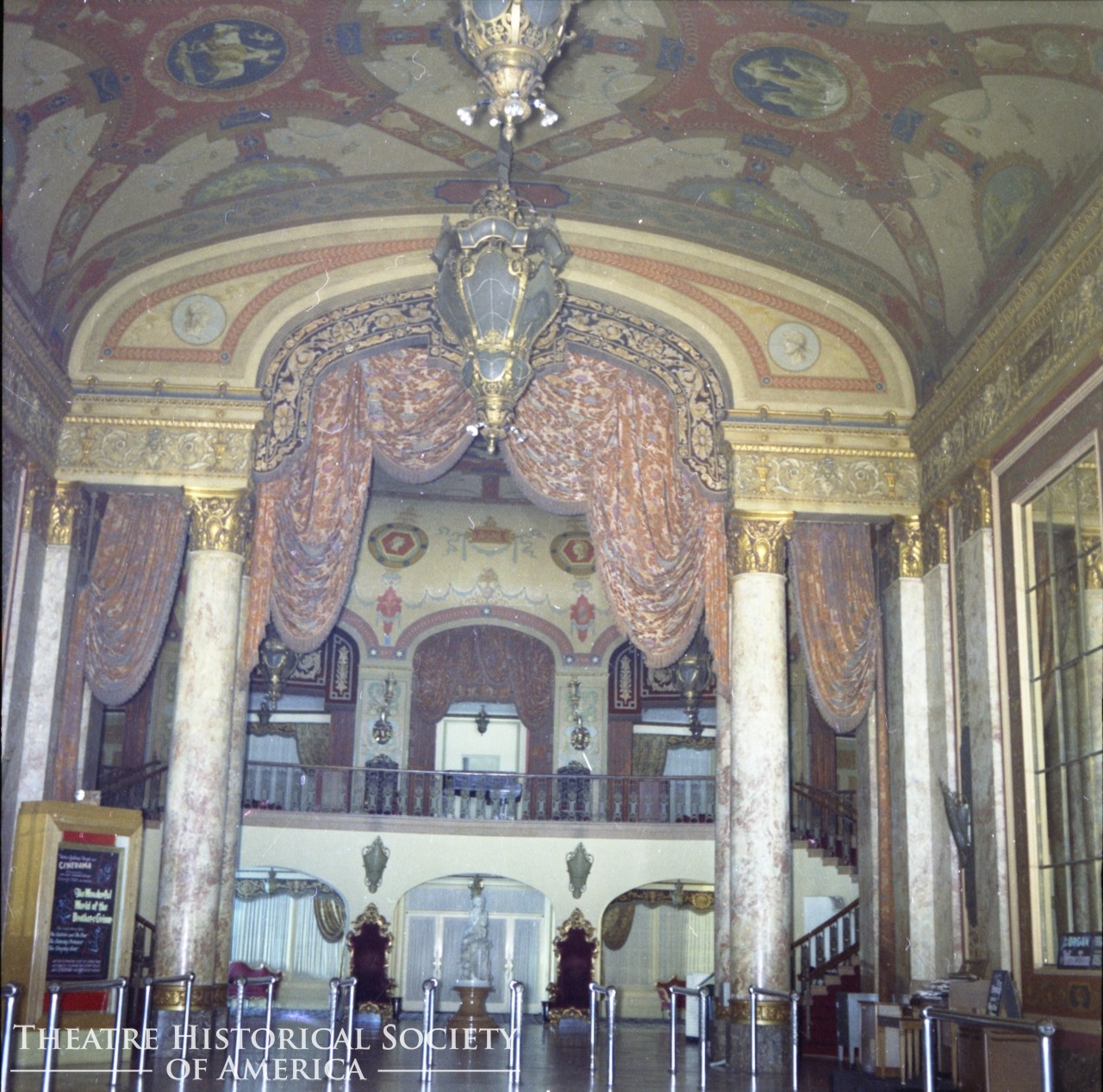All ceilings and walls depicted here were designed and hand painted by Grell and his team of assistants. NOW SEEN IN FULL COLOR!
Opening night for the Toledo Paramount was held on February 16, 1929 to a packed house with Paul Spor dressed in a white military uniform acting as Master of Ceremonies. Music was in abundance throughout the massive structure, the main focus being Wilye Stahl conducting the Toledo Paramount orchestra who was aided by Dwight Brown on the mighty Wurlitzer organ. The opening feature film was Redskin starring Richard Dix. The Toledo was another Publix Theatre managed by Paramount Famous Players-Lasky Corporation of New York owned by Adolph Zukor and by President of the Publix Theatre Corporation’s Sam Katz of Balaban & Katz, of Chicago.
Original construction costs were reported at $2.3 million plus the cost of the land and included a reported $200,000 spent on interior decorations and original artwork. The Toledo Blade reported in December 1928, just weeks before the grande opening that, “in addition to the art objects which will be placed in the new theatre, making it a veritable museum of art treasures, the decorative effects of the theatre will make it the ultimate in interior design.”
As was familiar with many Rapp and Rapp designed movie palaces, the theatre patron entered off a busy downtown corridor street into a grande lobby beyond which a grande rotunda or foyer was constructed. The lobby was nearly one hundred feet long and lined with mirrors surrounded by hand painted details by Grell and his team of assistants. The entire Grande Lobby and expansive Rotunda walls and ceilings were designed and hand painted by Grell. Intricate swirling and looping patterns connecting Greek and Roman figures and landscape scenes were reminiscent of Pompei. The entire theme was modeled after the Villa Madama in Rome, designed by Julio and Giovanna Udine and was likely influenced by Grell’s travels in Italy from 1912 to 1916 after he finished his studies at the Royal Academy of Fine Arts in Munich and the University of Munich.
On December 17, 1928 the Toledo Blade further complimented the interior decorations by reporting:
“those who have the opportunity to view the theatre can get an idea of the beauty that is to be and the immensity of the new house…The theatre will be as elaborate as the Michigan in Detroit and will be one of the finest of the entire Publix chain.”
The Toledo Paramount was the only theatre in the Publix chain that incorporated the city name into the design of the marquee. The Toledo Paramount was in operation from February 1929 until September 1965, only thirty-six years when wrecking balls razed the elegant beauty. An auction preceding the razing was held when all the interior furnishings were sold to the highest bidder.
During the first half of the twentieth century, Grell was one of only a handful of American muralist capable of creating such expansive projects that often covered entire ceilings of the grande lobbies and rotundas (see also the Gateway Theatre, Chicago & Assumption Catholic Church, Chicago). These large projects reportedly took up to eight months to complete requiring Grell to employ as many as eight assistants.
Now seen in full color with stunning reds, greens, oranges and blues.
Hand oil painted by Grell, 1928, installed before February 1929
Color and black & white interior images courtesy American Theatre Architecture Archive, Theatre Historical Society of America. Color images are from the early 1960’s.














































